The mercury is climbing steadily into the high twenties, and above us, the blue sky is dotted with only a smattering of little fluffy clouds.
At last, summer is here. Better still, we’ve got the scenery and roads to match: the B4518 scythes up, through and around rolling Welsh hills before depositing us at a viewpoint overlooking the stunning Clywedog reservoir, its gently wind-whipped waters glinting and sparkling in the sun a few hundred metres below us.
Behind us, their exhausts and engines pinging away like a distant steel band as metal components cool and contract, are three of the fastest hair dryers £200,000 (and a bit more) can buy.
Effortlessly combining game-on driving dynamics, drop-top glamour and power outputs north of 600bhp, this open-air trio could just be – right here and now, on these roads and in this weather – the best cars in the world.
However, this is an Autocar group test, so there has to be a winner. But which one?
Well, we’ll get to that, but first let’s take a look at the contenders, starting with the car that inspired this gathering of upper-class alfresco entertainers: the new Aston Martin Vantage Roadster, the latest offering from the resurgent and newly confident British brand.
As the name suggests, it’s essentially a convertible version of the recently launched coupé. In fact, it’s so closely related that, addition of a fabric roof and 60kg of strengthening aside, the handsomely thuggish Roadster shares pretty much the same set-up as its tin-top sibling.
The rear damper’s operating software has been tickled, but in all other mechanical respects, Aston’s cloth-topped contender is identical. That means it gets the same 656bhp ‘hot-vee’ twin-turbocharged 4.0-litre V8 that’s been donated by Mercedes-AMG, driving the rear wheels through an eight-speed automatic ZF transaxle.
Also carried over are the looks, which are given an extra edge by our car’s matt blue paintwork. The fabric roof itself is neatly integrated and, at just 6.8sec to raise or lower, is the quickest here, allowing you to worship the sun or avoid the rain at the drop of a hat.
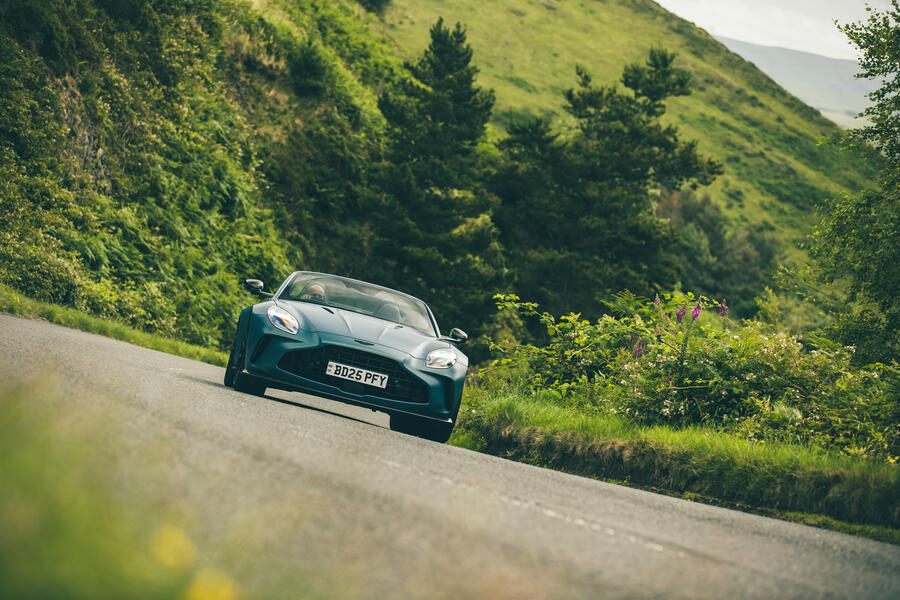

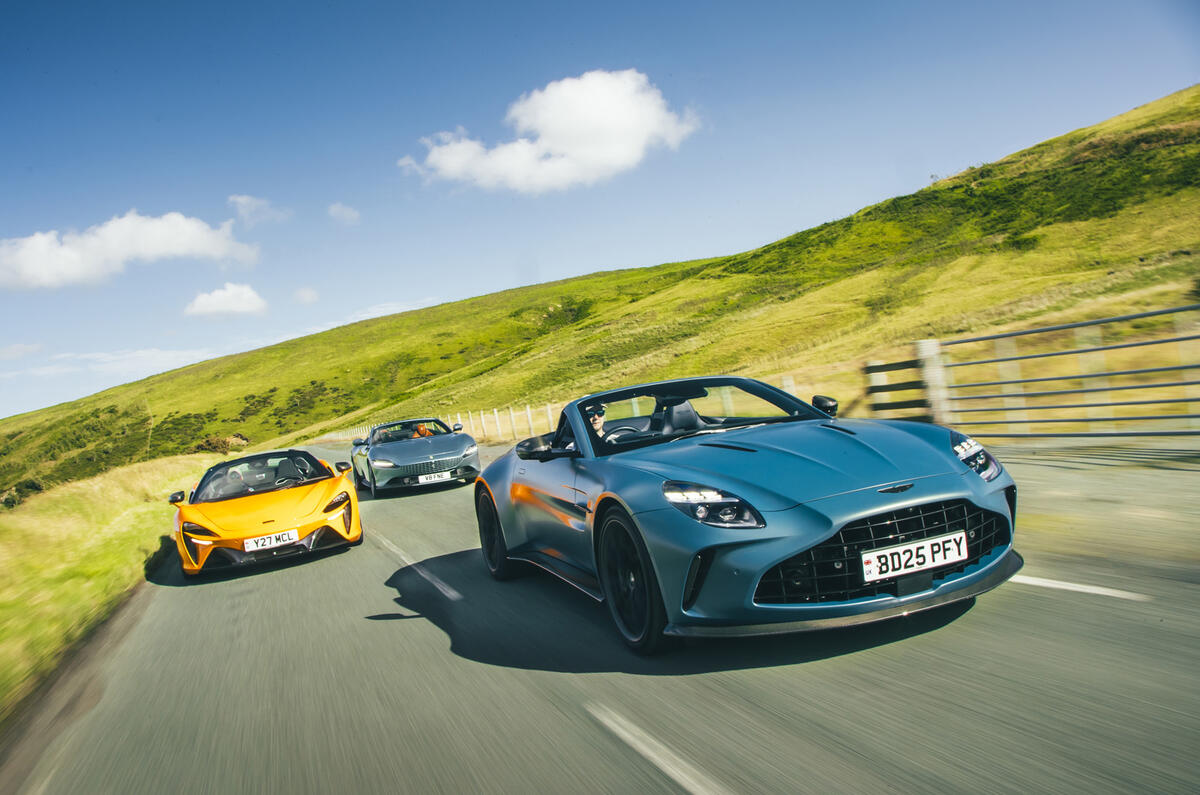

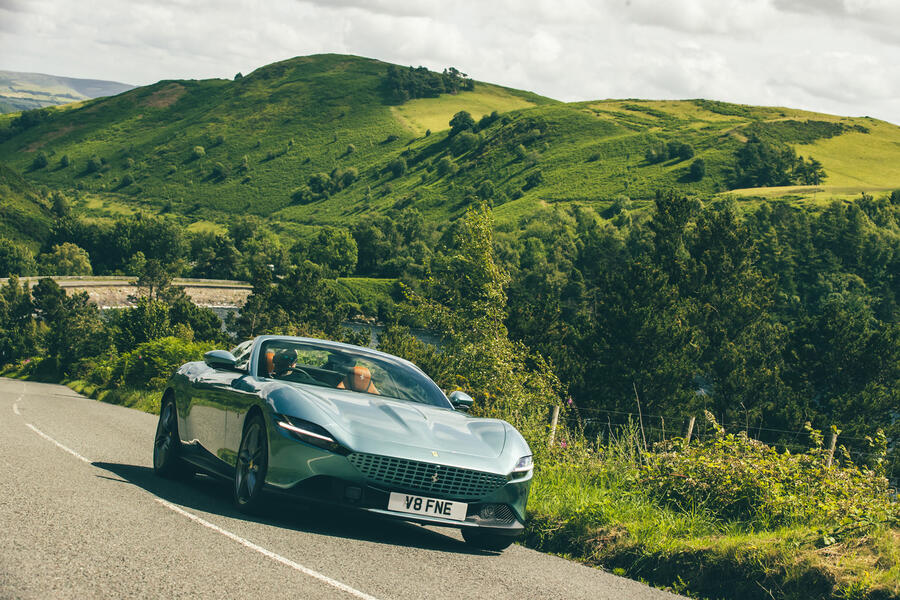
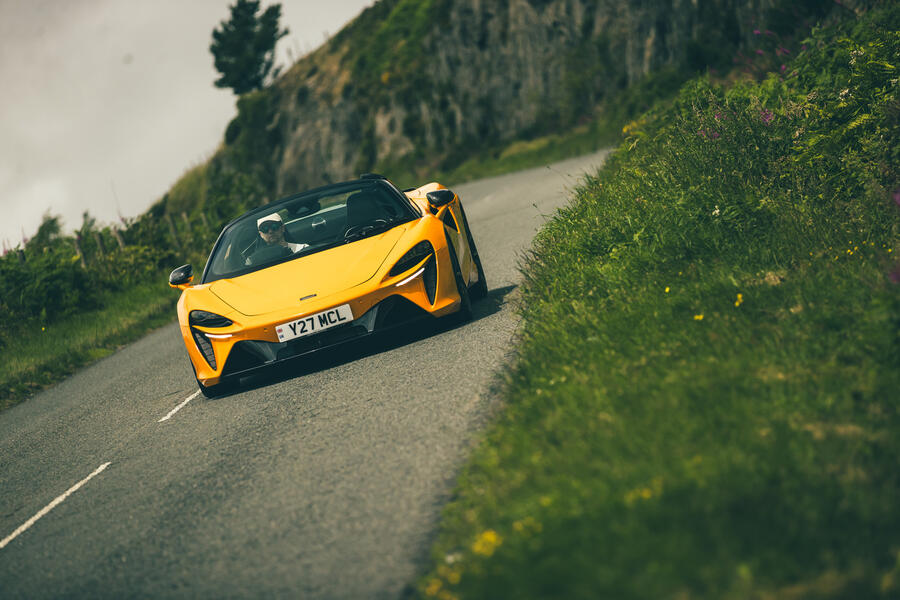
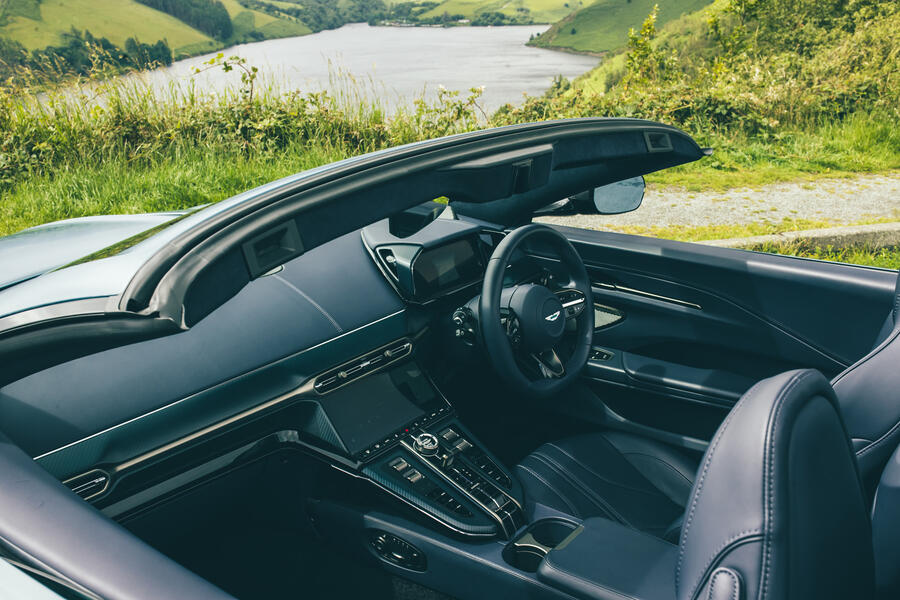

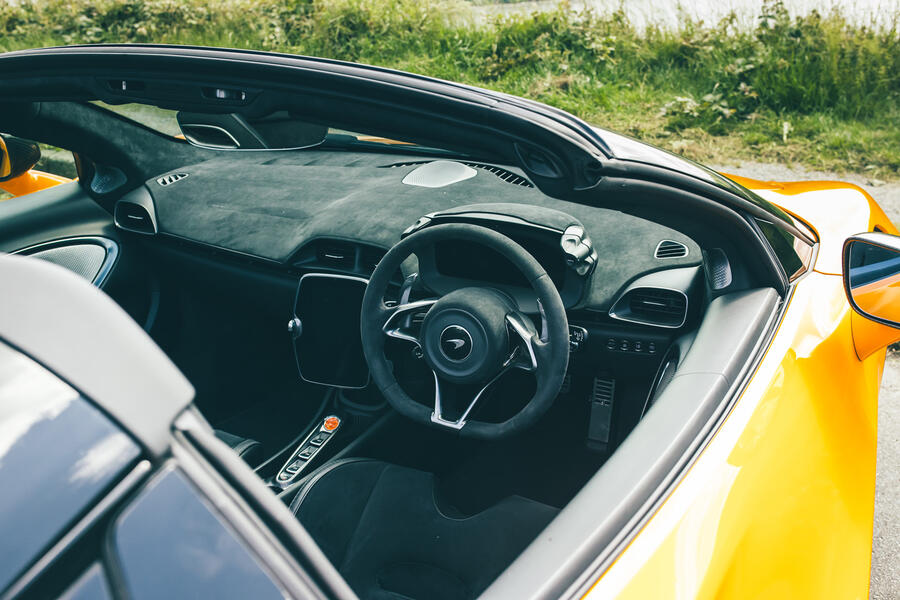
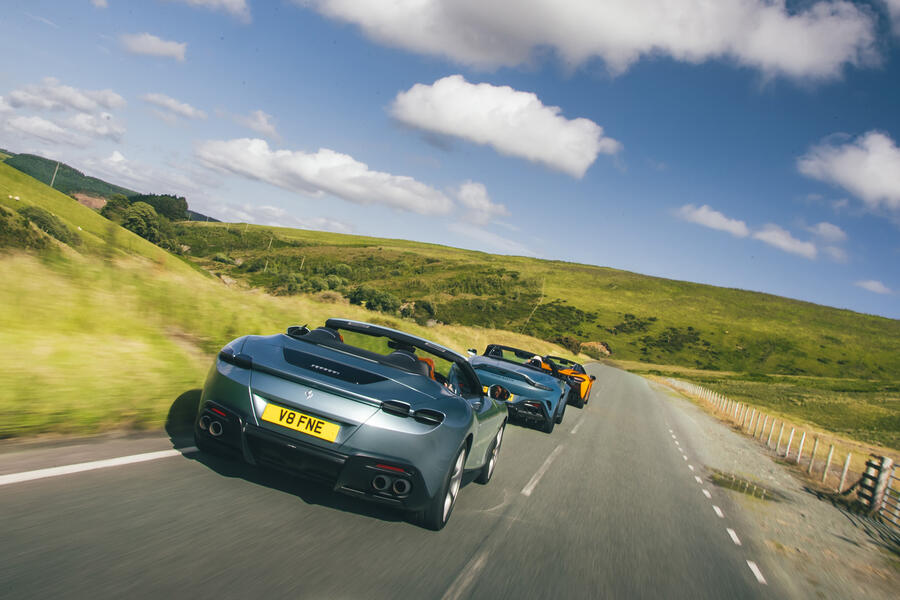
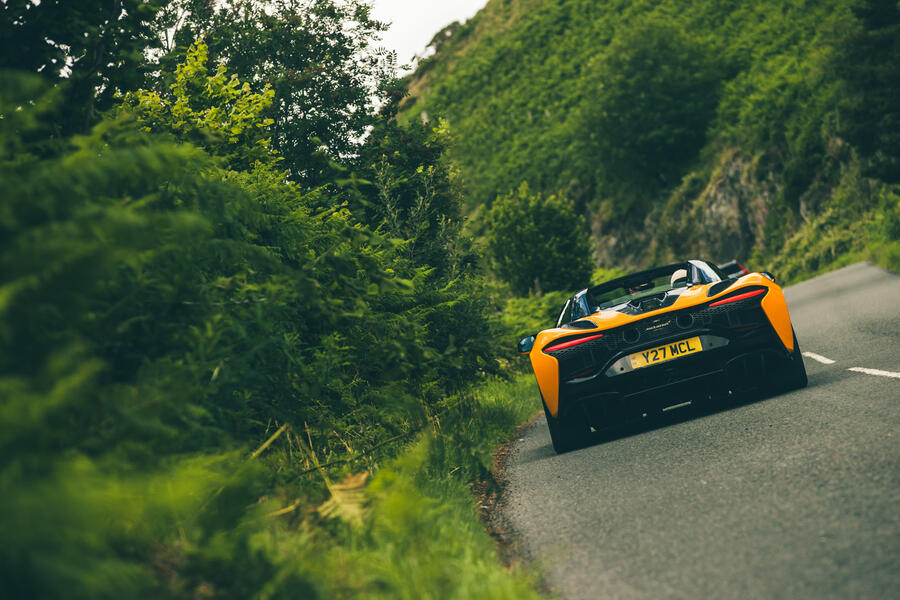
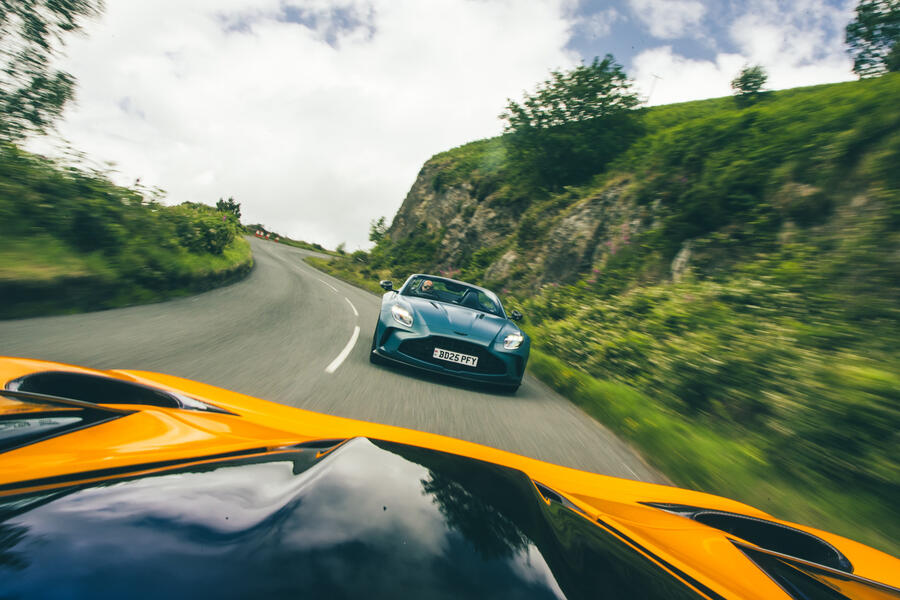
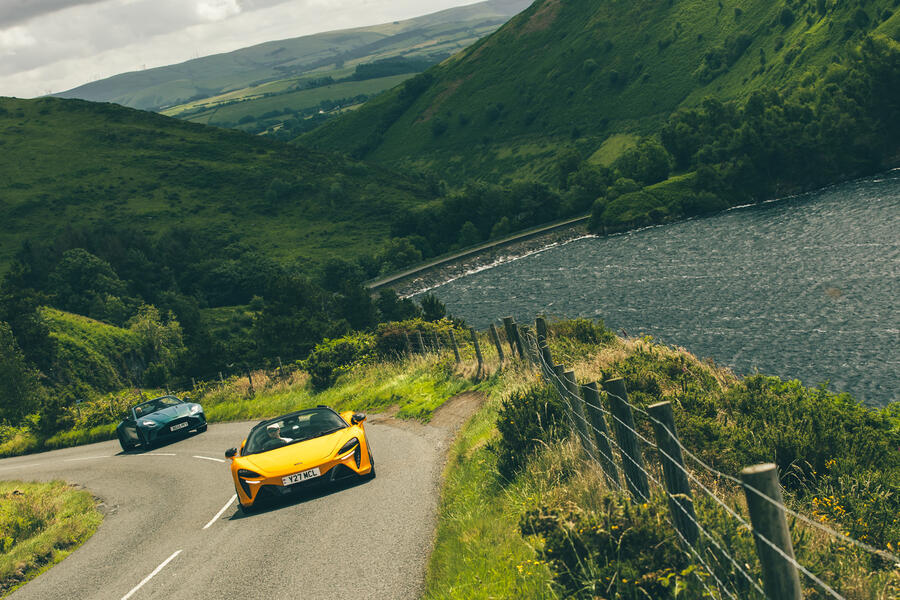
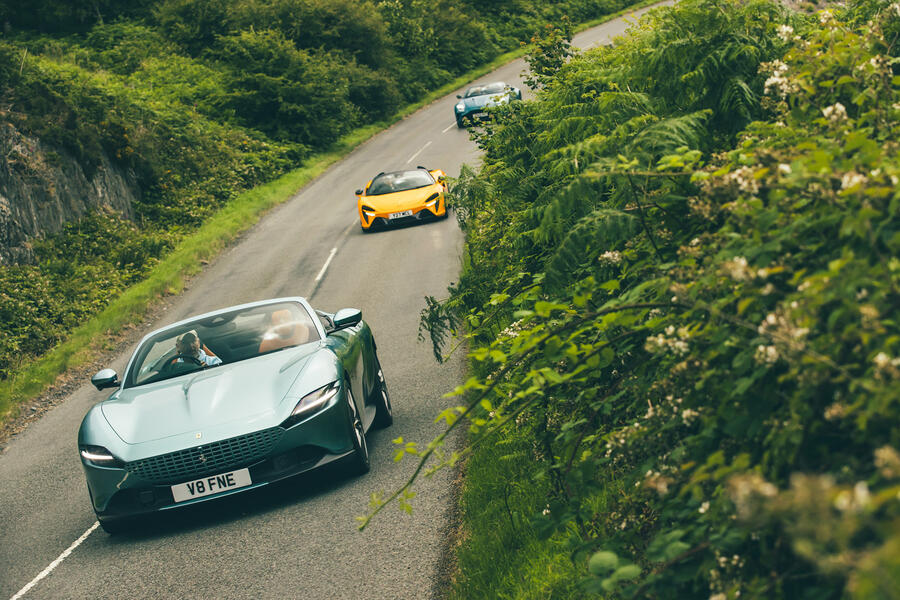
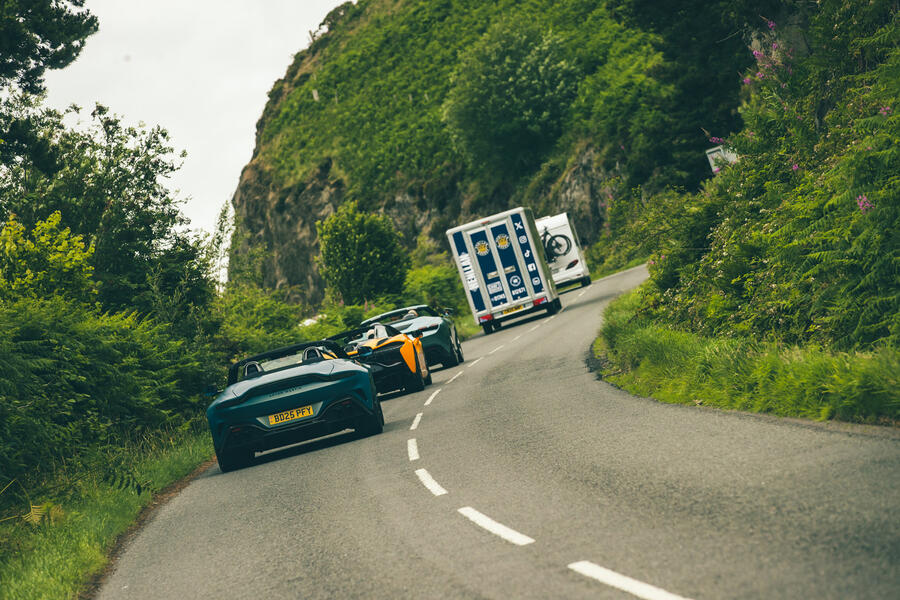
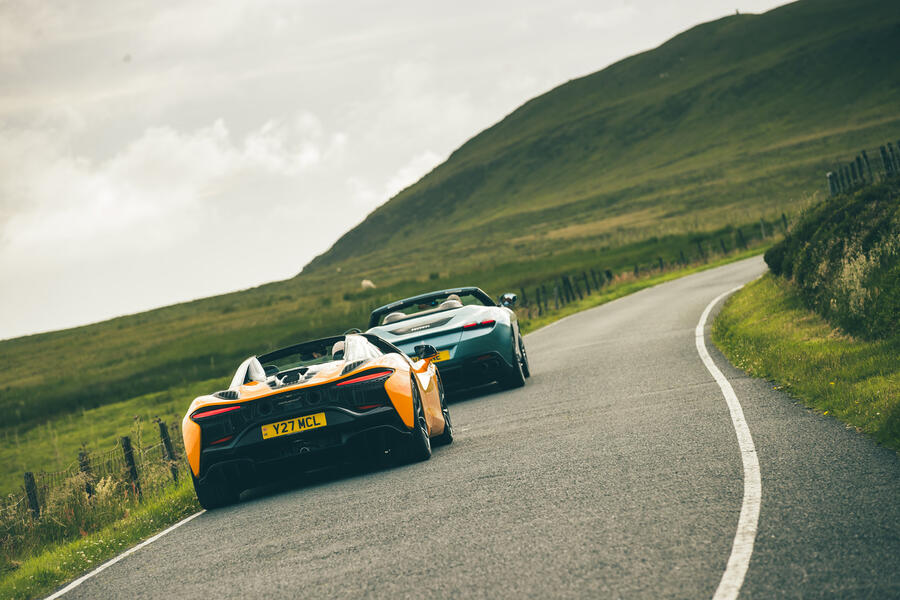
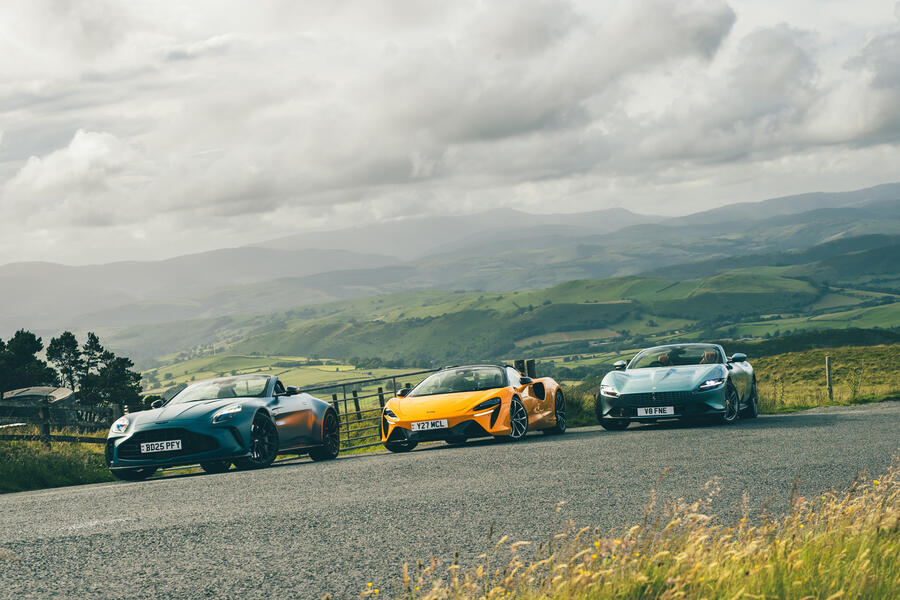
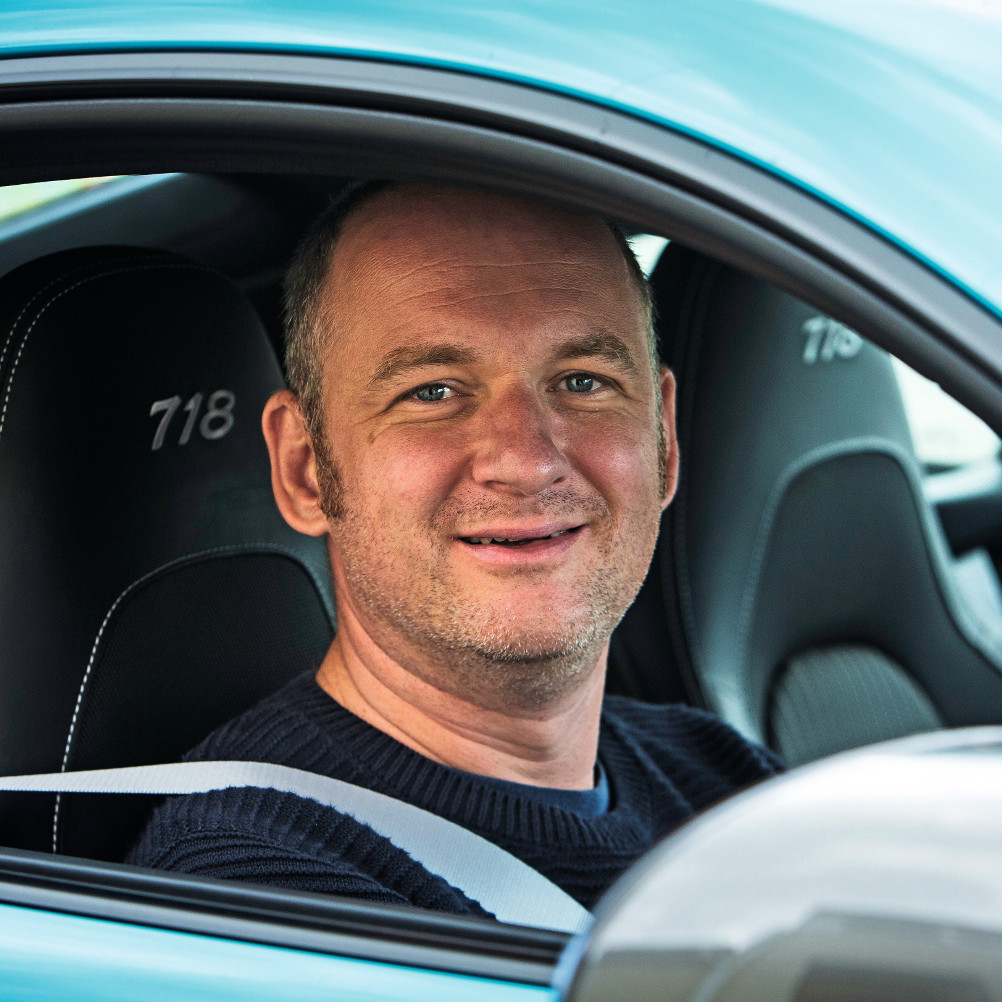



Join the debate
Add your comment
The only problem is finding the money for it. :)
I undersatnd off of your very valid points. But. Just look at the Aston.
That's where my money goes, every single day of the week.